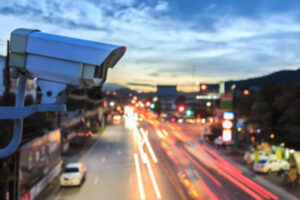By Brian Wolff
Over the past decade, municipal parking has become extremely data centric. As municipal parking administrators have come to rely increasingly on technology to improve the parking experience, they’ve discovered that these same tools can provide valuable operational data that can be used to manage parkades more efficiently and effectively.
PARCS systems, parking guidance, LPR, and mobile payment apps are wonderful management tools that provide important utilization data. Need to know how full your lot or parkade is, and when it tends to be most full? These technologies can tell you, often in real-time on any device. Want to know what types of parkers are using your parkade, an automated permitting program tied to your PARCS system can tell you that.
It’s obvious why these types of data are so valuable. Benchmarking is an essential element of any parking management program. If you understand your parking trends you can make sensible decisions about how to manage your parking programs. It’s why so many parking owners and operators rely on their PARCS and guidance tools for data.
Ask the Customer
But if you are focused solely on utilization data, you are only getting half the story; and you may not be getting the most important half. As important as it is to know who is parking in your facility, and when, it’s even more important to know how their experience was. Did they have trouble getting in and out of the parkade or lot? Did their payment go smoothly? Did gates and ticket machines work as expected? These are essential issues if you want to earn repeat business from parkers.
The most obvious way to get this information is by surveying customers. Hearing about parkers’ experiences straight from their own mouths is the best way to see how…
By Chris Scheppmann
The urban transportation landscape is rapidly changing, with ride sharing services becoming ubiquitous and self-driving vehicles on the horizon. No longer do most travelers drive themselves to a parking facility near their ultimate destinations; today they are just as likely to be dropped off by an Uber or Lyft driver right at the curb in front of their destination.
This trend has had a significant impact on downtown traffic, cluttering the curb with unmanaged vehicle movement and creating an unsafe environment for drivers and pedestrians alike. And curbs will become even more cluttered when self-driving vehicles begin to populate our streets in significant numbers, dropping off their passengers and then taking off.
In fact, over the past two years we have already begun to experience these changes because of the Covid-19 pandemic. At the height of the initial wave of Covid, restaurants and stores introduced curbside pickup to serve their customers (and to survive). In many neighborhoods curbsides are now more like a free-for-all, with drivers pulling up wherever they like for however long they want. The proliferation of self-driving vehicles will just exacerbate this already serious issue.
A Technological Solution
The answer to these new curbside pressures can be found in Intelligent Camera Technology. Intelligent Camera Technology leverages the latest advancements in vison-based software technology to provide accurate and affordable curb management. The cameras monitor curbside activity in real time, analyzing what types of vehicles are using the curb and for how long, and transmitting that information to a cloud-based platform that determines whether each vehicle’s use of the curb is appropriate.
The heart of the curb management suite is specialized software that constantly receives data from curbside cameras and analyzes that data in real-time. The software manages a host of essential curb-related tasks, including TNC monitoring,…





